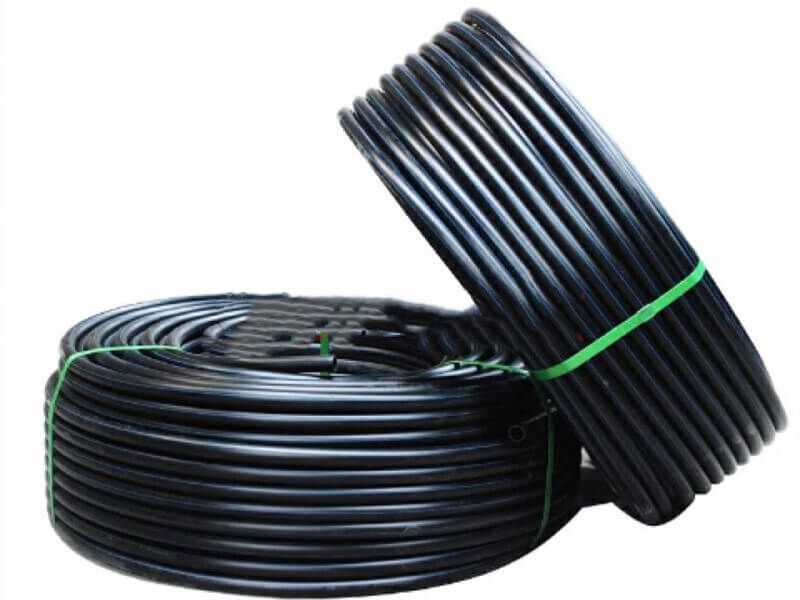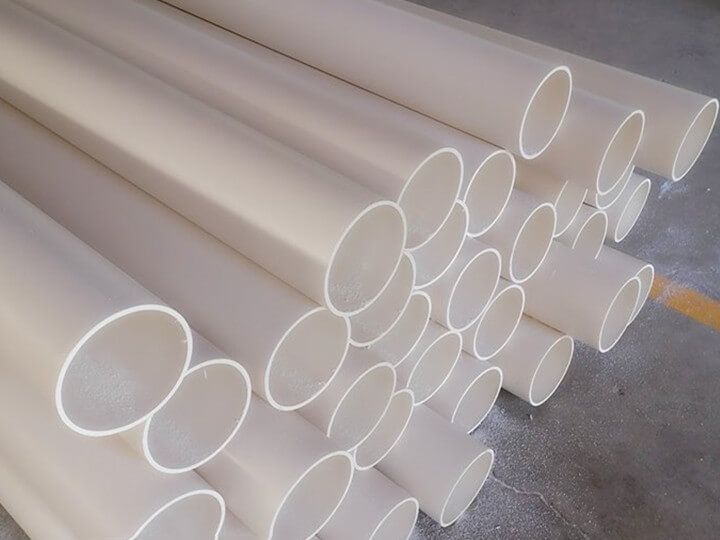The Difference Between PE and PVC
Polyethylene (PE) is a thermoplastic resin prepared by polymerization of ethylene. Polyethylene is odorless, non-toxic and feels like wax. It has excellent low temperature resistance, good chemical stability and can resist the erosion of most acids and bases. It is insoluble in general solvents at room temperature, with small water absorption and excellent electrical insulation.
Polyvinyl chloride (PVC) is a thermoplastic resin polymerized by vinyl chloride under the action of initiator. It has large dispersion, molecular weight increases with the decrease of polymerization temperature, no fixed melting point, good mechanical properties and excellent dielectric properties.
PE and PVC are very similar in performance, which is difficult to distinguish from the surface, only through some tips.
How to distinguish PVC and PE?
1. Touch method
It feels lubricated by hand, and the surface is coated with a layer of wax. This is a non-toxic polyethylene (PE) film bag, while the polyvinyl chloride (PVC) film feels sticky.
2. Dithering method
Shaking by hand, the sound is crisp, and the polyethylene (PE) film bag is easy to float. The low voice of shaking by hand is polyvinyl chloride (PVC) film bag.
3. Combustion method
It is inflammable in case of fire, the flame is yellow, paraffin oil drips when burning, and the gas when candles burn. It is a non-toxic polyethylene (PE) film bag. If it is not easy to burn, it will go out immediately after leaving the fire, and the flame is green. It is a polyvinyl chloride (PVC) film bag.
4. Immersion method
Immerse the plastic bag in the water and press it into the water by hand. Polyethylene (PE) can surface and polyvinyl chloride (PVC) can sink to the bottom.
For example, PVC gloves commonly used in life are made of PVC paste resin, plasticizer, stabilizer, viscosity reducer, PU and softened water through special processes.
Disposable PVC gloves do not contain allergens; Low dust generation and low ion content; It has strong chemical resistance and certain pH resistance; It has strong tensile strength, puncture resistance and is not easy to be damaged; With good flexibility and touch, it is convenient and comfortable to wear; It has anti-static performance and can be used in dust-free environment.
Disposable PE gloves are made of low (LDPE) and high (HDPE) density polyethylene materials and refined with other additives. It has high transparency; The opening of gloves is loose, which is convenient and comfortable to wear; The surface is concave convex or flat, with bright color and uniform thickness; Light weight, good hand feel, low price, non-toxic and harmless, it is a general economic protection product.
Disposable PE gloves are mostly used for household cleaning, chemical inspection, mechanical gardening, food, health, industrial and agricultural protection, hair dyeing, nursing and washing, dining (such as eating lobster and big bones), etc. wearing them can avoid the inconvenience of washing hands.
Disposable PVC gloves are mostly used for household work, electronics, chemical industry, aquaculture, glass, food and other factory protection, hospitals, scientific research and other industries; It is widely used in the installation of semiconductors, precision electronic components and instruments and the operation of viscous metal vessels, the installation and commissioning of high-tech products, disc actuators, composite materials, LCD display meters, circuit board production lines, optical products, laboratories, hospitals, beauty salons and other fields.
The Difference Between PE and PVC Pipe
PE Pipe
PE (polyethylene) material is widely used in the field of water supply pipe manufacturing because of its high strength, corrosion resistance, non-toxic and other characteristics. It is an ideal pipe to replace ordinary iron water supply pipe.

PE pipe includes medium density polyethylene pipe and high density polyethylene pipe. It is divided into sdr11 and sdr17 according to the wall thickness 6 series. The former is suitable for transporting gaseous artificial gas, natural gas and liquefied petroleum gas, while the latter is mainly used for transporting natural gas. Compared with steel pipe, the construction process is simple and flexible. More importantly, it does not need anti-corrosion treatment, which will save a lot of processes. The disadvantage is that the equipment is not as good as steel pipe. During construction, special attention shall be paid to the safe spacing of thermal heating, and it shall not be exposed to the air and sunshine, and it is sensitive to chemicals to prevent damage caused by the leakage of sewage pipeline.
PVC Pipe
PVC water supply pipe is a kind of water supply pipe produced by taking sanitary PVC resin as the main raw material, adding quantitative stabilizer, lubricant, filler, color enhancer, extrusion molding by plastic extruder and injection molding by injection molding machine, and cooling, curing, shaping, inspection, packaging and other processes.
PVC pipe (PVC-U pipe) unplasticized polyvinyl chloride pipe is extruded by hot pressing method after mixing polyvinyl chloride resin with stabilizer and lubricant. It is the first plastic pipe developed and applied. PVC-U pipe has strong corrosion resistance, easy adhesion, low price and hard texture. However, due to the leakage of PVC-U monomer and additives, it is only suitable for water supply system with transmission temperature not exceeding 45 ℃. Plastic pipes are used to transport drinking water, wastewater, chemicals, heating and cooling fluids, food, ultra pure liquids, mud, gas, compressed air and vacuum systems.
At present, China's municipal pipe market and plastic pipe are developing steadily. PE pipe, PP-R pipe and UPVC pipe all occupy a place, among which the strong development momentum of PE pipe is the most remarkable. PE pipes are widely used in many fields. Among them, sewage pipe and gas pipe are the two largest application markets.

Characteristic
Characteristics of PE water supply pipe: high strength, good toughness, corrosion resistance, wear resistance, good low-temperature impact resistance, simple construction and maintenance. It is a green, environmental protection and healthy drinking water transmission pipe.
Characteristics of PVC water supply pipe: light weight, high strength, good acid and alkali resistance, chemical corrosion resistance, easy installation, long service life, non-toxic and sanitary, and low cost.
Scope of Application
PE water supply pipes are mainly used in urban water supply and drainage, chemical industry, mineral sand, mud transportation, etc.
PVC water supply pipes are mainly used for water supply pipes inside and outside buildings. They are suitable for transporting water with temperature not exceeding 45 ℃, including general purpose and drinking water.
PVC and PE pipes can also drain water. Which one is better?
-
The standards of the two are different. The standard of PE water supply pipe is GB / t13663-2000 and the standard of PVC water supply pipe is GB / t10002 1-2006. The requirements for wall thickness and performance indexes of the two are different in the standard.
-
The strength of PVC is better than that of PE, and the toughness (impact resistance) of PE is better than that of PVC. PE can be used at minus 20 degrees (the internal fluid cannot freeze and keep flowing).
-
PE pipes can be connected by hot melt, with safe and reliable connection and high strength; PVC pipes are bonded with adhesive or elastic sealing ring, which is convenient and fast.
-
The formula of PVC pipe is complex and there are many additives. Various additives used in drinking water must be safe and non-toxic. PVC pipe has less sanitary additives and higher performance than PE pipe.
-
PE pipes are relatively soft. Small diameter pipes can be made into coils, while PVC pipes are relatively hard and can not be used as coils.